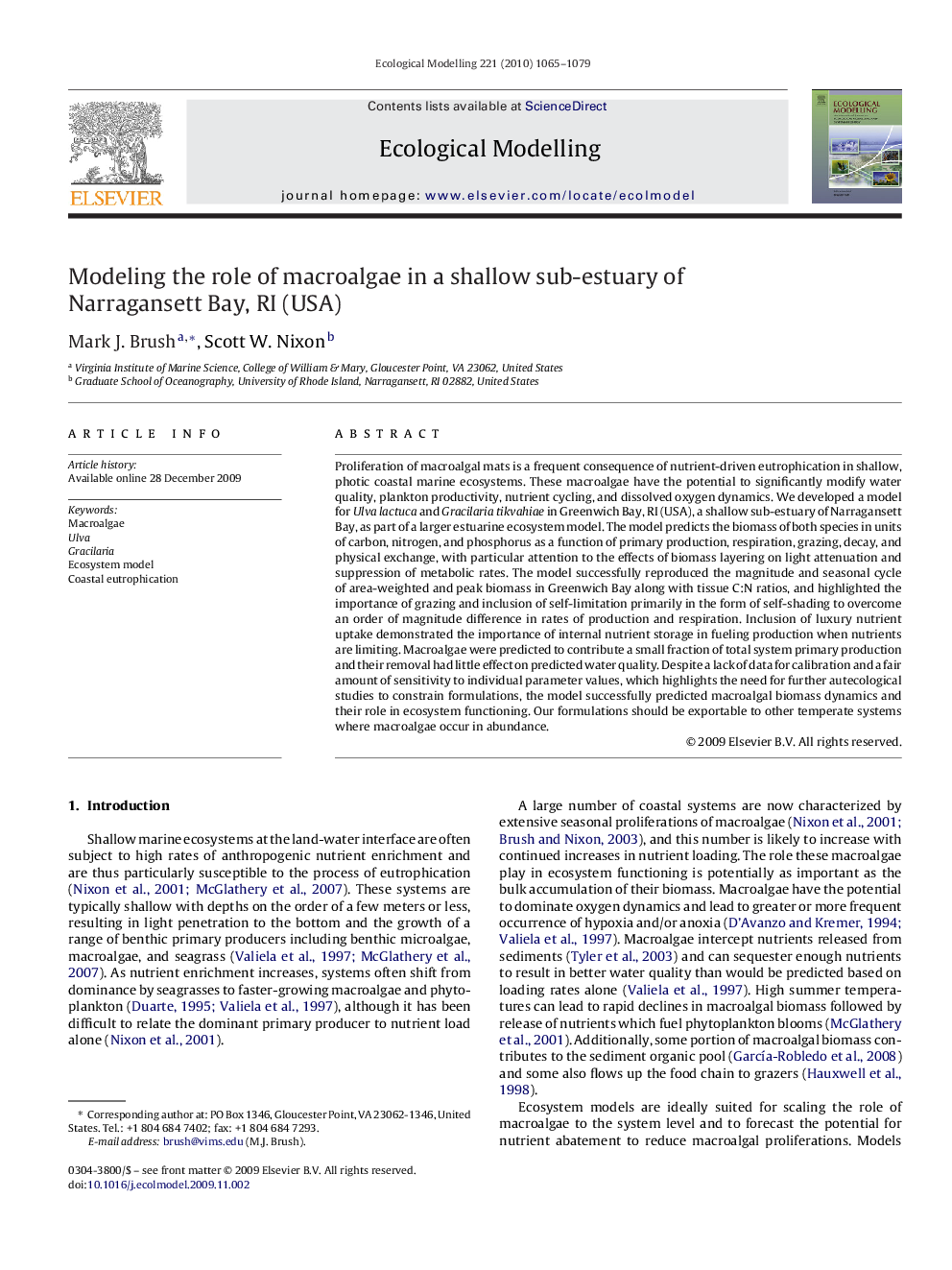| Article ID | Journal | Published Year | Pages | File Type |
|---|---|---|---|---|
| 4377447 | Ecological Modelling | 2010 | 15 Pages |
Abstract
Proliferation of macroalgal mats is a frequent consequence of nutrient-driven eutrophication in shallow, photic coastal marine ecosystems. These macroalgae have the potential to significantly modify water quality, plankton productivity, nutrient cycling, and dissolved oxygen dynamics. We developed a model for Ulva lactuca and Gracilaria tikvahiae in Greenwich Bay, RI (USA), a shallow sub-estuary of Narragansett Bay, as part of a larger estuarine ecosystem model. The model predicts the biomass of both species in units of carbon, nitrogen, and phosphorus as a function of primary production, respiration, grazing, decay, and physical exchange, with particular attention to the effects of biomass layering on light attenuation and suppression of metabolic rates. The model successfully reproduced the magnitude and seasonal cycle of area-weighted and peak biomass in Greenwich Bay along with tissue C:N ratios, and highlighted the importance of grazing and inclusion of self-limitation primarily in the form of self-shading to overcome an order of magnitude difference in rates of production and respiration. Inclusion of luxury nutrient uptake demonstrated the importance of internal nutrient storage in fueling production when nutrients are limiting. Macroalgae were predicted to contribute a small fraction of total system primary production and their removal had little effect on predicted water quality. Despite a lack of data for calibration and a fair amount of sensitivity to individual parameter values, which highlights the need for further autecological studies to constrain formulations, the model successfully predicted macroalgal biomass dynamics and their role in ecosystem functioning. Our formulations should be exportable to other temperate systems where macroalgae occur in abundance.
Related Topics
Life Sciences
Agricultural and Biological Sciences
Ecology, Evolution, Behavior and Systematics
Authors
Mark J. Brush, Scott W. Nixon,
